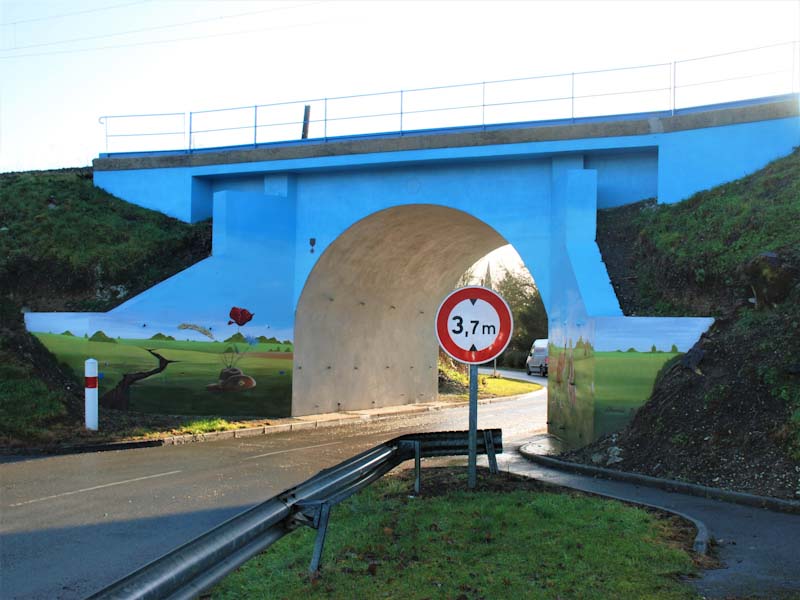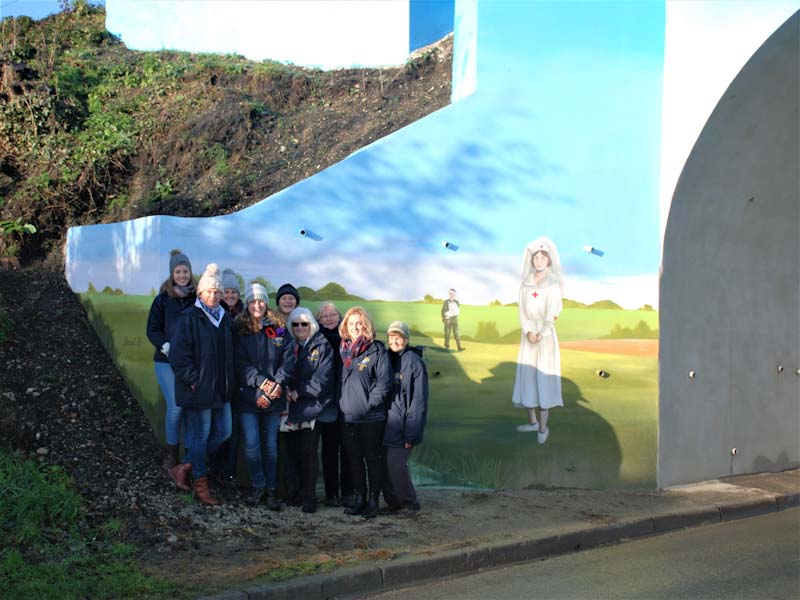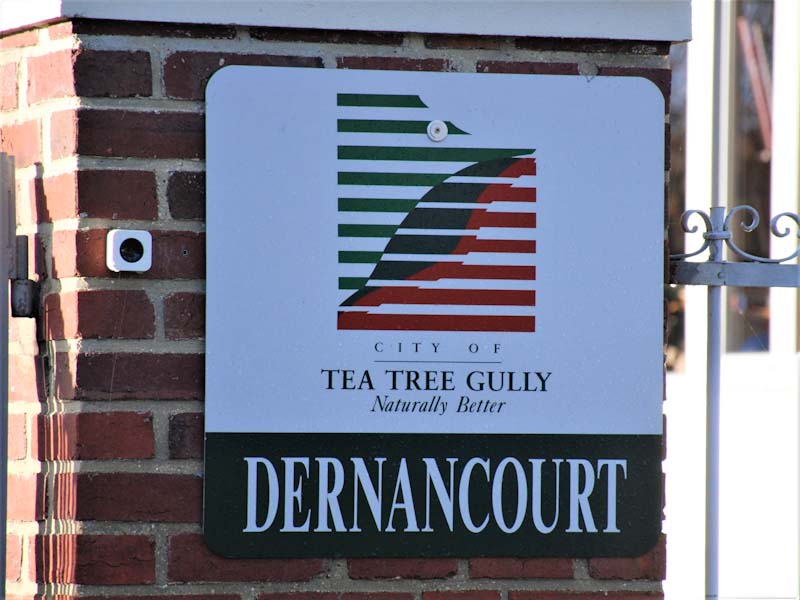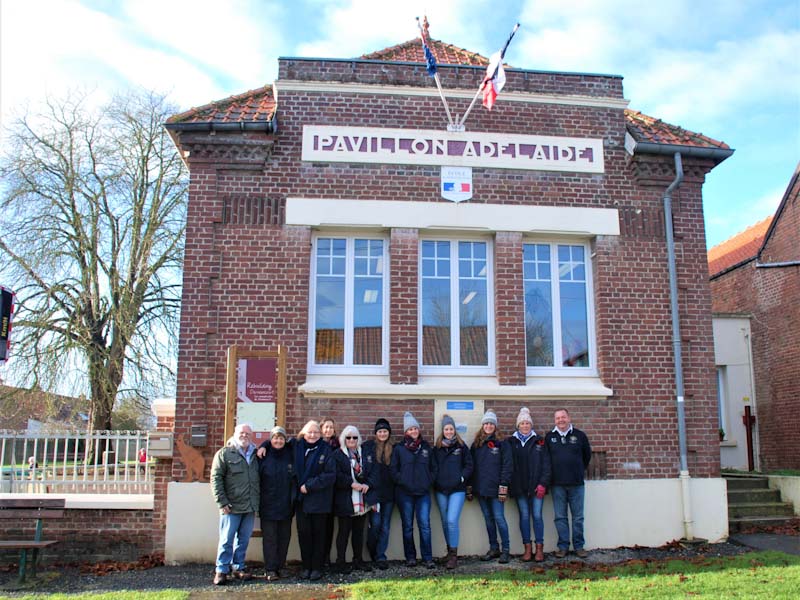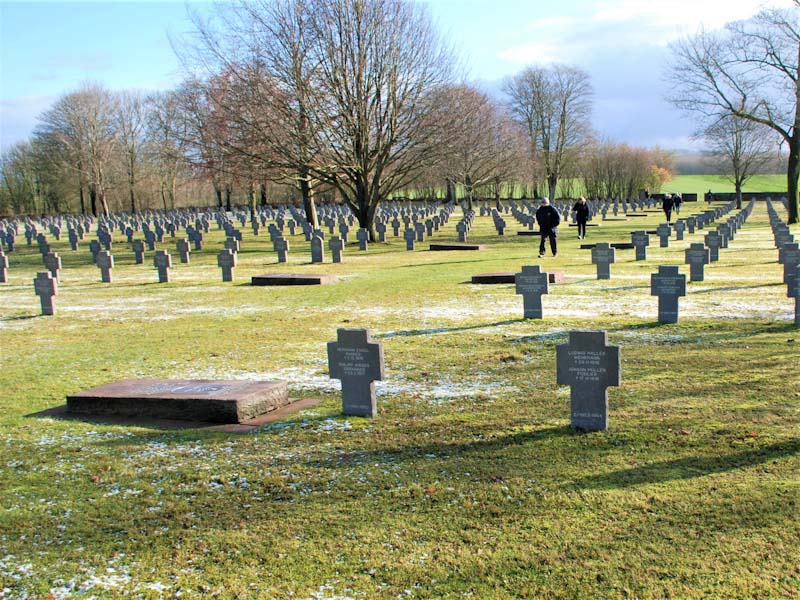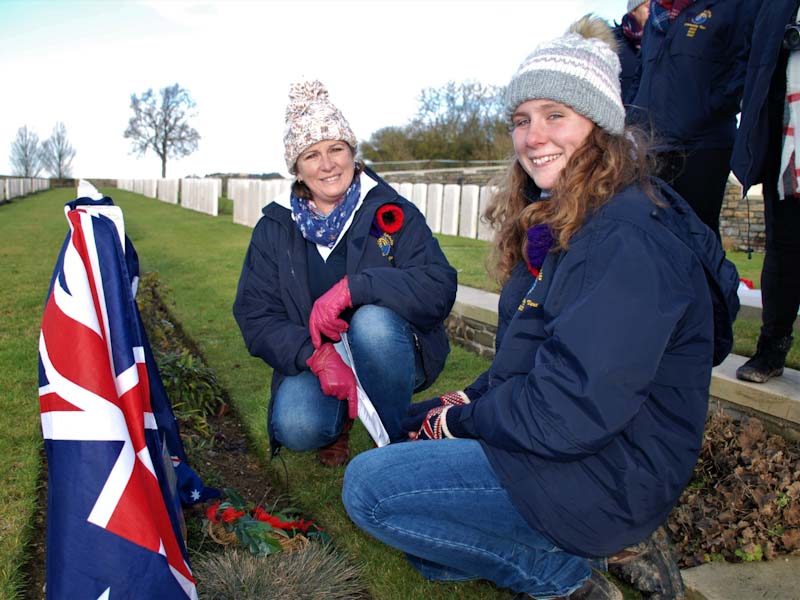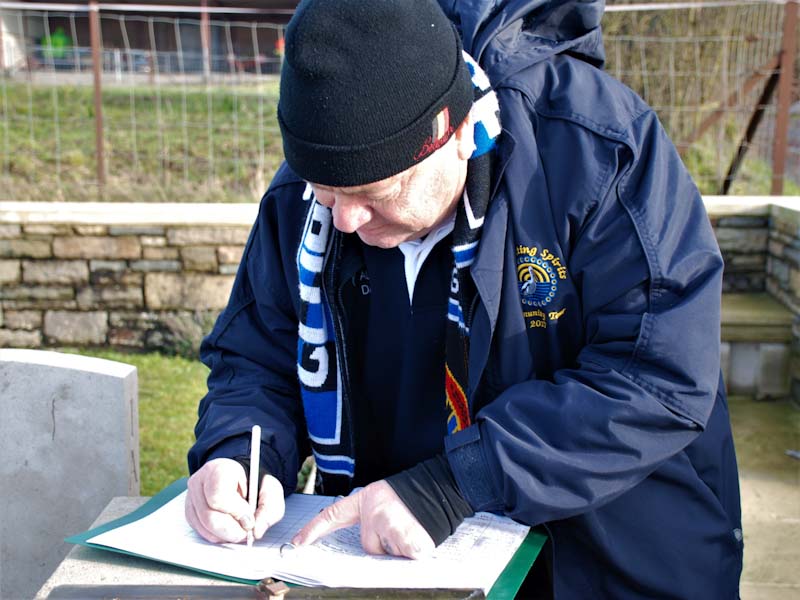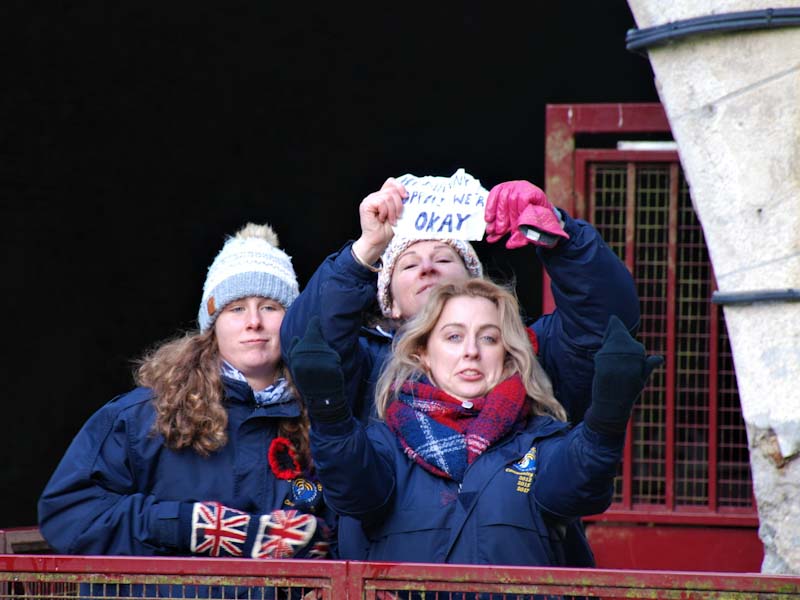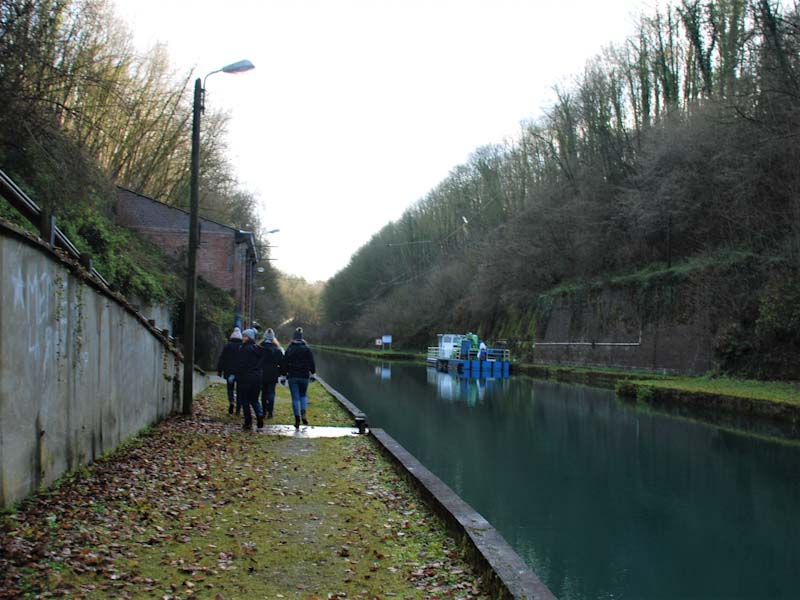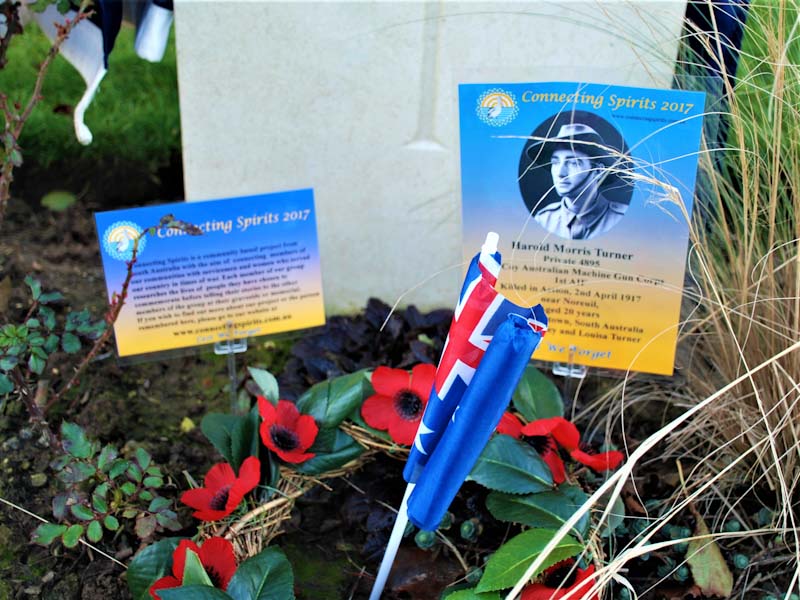December 8
Day 12 Dernancourt, Bellicourt, Bullecourt.
This was a big day. Firstly we made our way to the village of Dernancourt, initially stopping at the cemetery, where many men are buried from the fighting in late March, early April 1918. This was during the German Spring Offensive, and the German Army was making its way down the Somme over the ground that so many had died to capture just 2 years earlier. The Germans had captured Albert and were heading for Amiens and the railway network located there. On the 5th April their progress was held up by a dogged Australian defence, particularly by the 47th and 48th Battalions.
After the war, just as Victorian children had donated money to help rebuild Villers-Bretonneux, South Australians provided money to help rebuild this little community. As a result the main school building is called the Pavilion Adelaide, and Adelaide has a suburb named after the village. As we walked into the town from the cemetery we passed through a tunnel under the railway, which was the site of much of the fighting on the 5th April. If you visit the Australian War Memorial in Canberra, you can see the diorama of the battle, and the tunnel is a clear feature of the display. It has recently been painted with murals by a local artist which feature many iconic images such as the slouch hat with poppies, cornflowers and a head of wheat, while on the other side of the road is a little girl with a kangaroo. Other scenes include a nurse and a wounded soldier, and if you look carefully you can see a reference to the weeping angel from the cathedral in Amiens, pictures of which were often sent home by soldiers as postcards.
As we made our way through the streets we stopped to read the many information signs placed around the town that highlighted the town’s role in the war and its connection to South Australia. More murals depicting Australian scenes and images were dotted around; on power boxes, walls or wherever there was space to allow. We stood in front of the school to have a photo taken under the sign “Pavilion Adelaide’ but did not expect to visit the school; in France, as it is in Australia now, you just can’t walk in off the street and expect to be able to walk around a school. However the local mayor just happened to be hanging Christmas lights on the trees and when he found out that we were from, he insisted we come in and visit the children as they did their school work. They were only too keen to share what they were doing and for the older students, to try out some of the English that they had learned. We also went to the town hall and were showed a huge collection of photos, including an old photo of Burra showing the local War Memorial in the middle of the town.
As we made our way toward Bellicourt, every village seemed to have some reference to the war and the Australian presence at that time. It may be a street named Roo de Kanga, or just a sign stating that “We Do Not Forget Australia” but obviously the Anzacs made an impression 100 years ago!
We stopped at the German Cemetery at Maissemy. Unlike the Commonwealth and French Cemeteries the headstones at each German cemetery are different. At this one they are made of grey stone in the shape of a very stout cross. Each one had 2 or 3 names on it and there were thousands. This cemetery also includes a mass grave with 20,000 remains buried in it and the names of those interred on large stone blocks. A truly moving place.
The next stop for us was Bellicourt. This was where my great uncle, Frank Bartley was killed, and even though he has no known grave, my family and I have commemorated him at an unknown grave in the local cemetery on every Connecting Spirits trip that we have attended. This time we would be commemorating Mel’s great uncle, Harold Watts, as well. Mel and I have worked together for a number of years and her husband Nigel and I went to school together many years ago. As Nigel prepared to go the 2015 trip, he asked Mel if she knew of any connections from her family that he could commemorate. She wasn’t aware of any but did a little digging in to her family tree and found Harold. As we talked about him in the staffroom one lunchtime it became obvious that not only was he in the same unit as my uncle, he was also killed on the same day in the same place. Now we were both here in France about to commemorate our relatives at graves only a few metres apart.
In 2014, Nigel and I had collected a 77mm Field Gun from a collector in Melbourne who had sold it to the Meningie RSL. Littel did we know that the gun was captured by the 32nd Battalion the day after both Harold and Frank were killed, just a kilometere or so away. It may have even been the gun that fired the shell that killed Frank. The connections continue to grow!
After commemorating Harolf and Frank, we walked along the St. Quentin Canal a few kilometres south of the cemetery, where it enters a tunnel that takes it beneath the town of Bellicourt. This canal was built under the orders of Napolean Bonaparte by political prisoners using only basic hand tools like picks and shovels. The serene beauty of this place belies the misery and physical deprivation that must have accompanied its construction.
Earlier we had stopped at the bridge over the canal at Recquieval. This is also something of an engineering marvel, as it was the same one that was standing over 100 years ago when the British 46th Division broke through the German lines in this area, clambering down the sides of the canal, crossing it using whatever flotation aids that could be found and then climbing up the other side all in the face of machine gun and artillery fire. The bridge had been set with explosives, but the British captured it before it could be detonated. There is a famous photo of thousands of men of the 46th Division lining the bank, being congratulated by their commanding officer. The shell holes in the bridge then do not engender much confidence in its structural stability now, but still it stands.
From Bellicourt we travelled to Cagnicourt. Here I commemorated my grandfather's, and Uncle Franks's, cousin, Harold Turner. He was killed on the 2nd April 1917 at Norieul, but when his body was recovered after the war the War Graves Commission were building the cemetery at Cagnicourt and so his remains were transported to there, 7 kms away from where he was killed.
A few kilometres further on is Bullecourt, the site of 2 battles fought by Australian soldiers in 1917.
The first, on April 11th, was an unmitigated disaster that has since been used as a teaching example in military academied on now NOT to plan and execute a battle. The plan was originally to use tanks to break through the wire and to provide protection to the infantry from machine guns, thus dispensing of the need for preliminary artillery, supposedly surprising the Germans. Unfortunately the Germans knew too well that an attack was imminent, and when the tanks failed to arrive in sufficient numbers, and those that did broke down, or were shelled, the infantry were exposed to horrendous amchine gun and artillery fire before even getting to the German lines. There was no plan B and the artillery weren't able to support the troops, as many had made their way in to the German lines and therefore would have been hit by their own shells. The 4th Division lost many men that day.
In early May a 2nd attempt was made and this time was successful in achieving the goal of capturing a section of the Hindenburg Line, but at further human cost.
